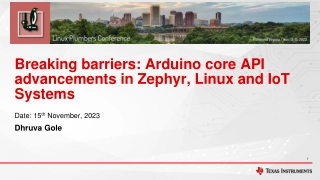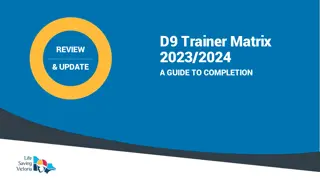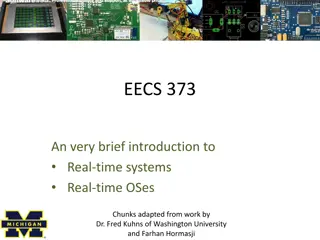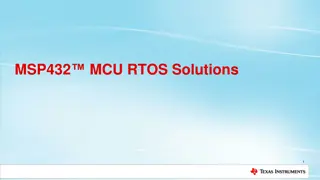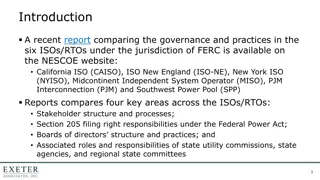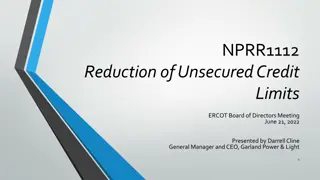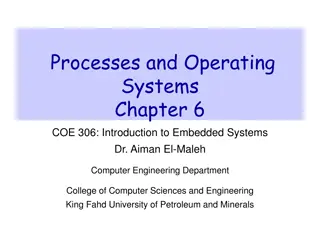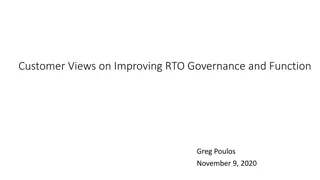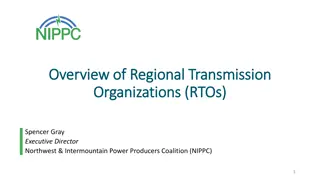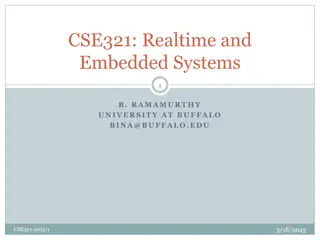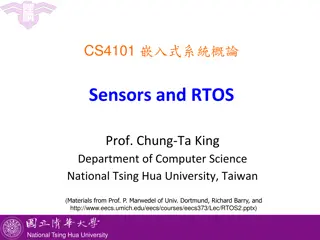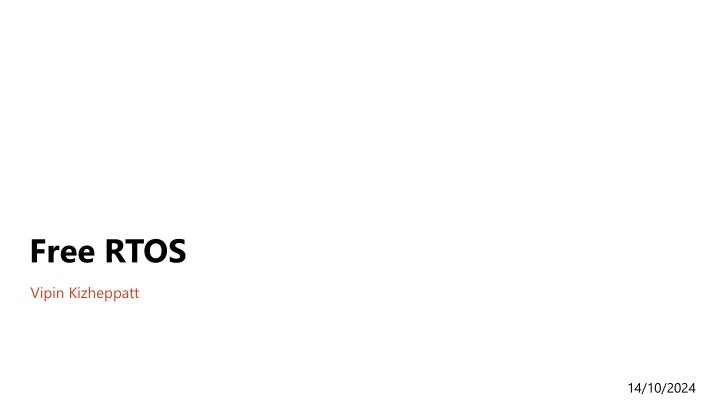
Real-Time Operating Systems: FreeRTOS Overview and Features
"Explore the features and benefits of FreeRTOS, an open-source real-time operating system ideal for embedded systems with limited resources. Learn about its modular design, task scheduling, and essential services for efficient system operation."
Download Presentation

Please find below an Image/Link to download the presentation.
The content on the website is provided AS IS for your information and personal use only. It may not be sold, licensed, or shared on other websites without obtaining consent from the author. If you encounter any issues during the download, it is possible that the publisher has removed the file from their server.
You are allowed to download the files provided on this website for personal or commercial use, subject to the condition that they are used lawfully. All files are the property of their respective owners.
The content on the website is provided AS IS for your information and personal use only. It may not be sold, licensed, or shared on other websites without obtaining consent from the author.
E N D
Presentation Transcript
Free RTOS Vipin Kizheppatt 14/10/2024
Real-Time Operating Systems Mostly used in embedded systems Should be modular and extensible Kernel must be small since ROM and RAM space may be limited Some systems are safety critical and require certification including OS Usually follows microkernel approach providing only essential services, such as scheduling, synchronization, and interrupt handling 2
Real-Time Operating Systems Eg.1: VxWorks from Wind River Used in 2020 Mars Rover, Mars Reconnaissance Orbiter, Boeing 787, BMW iDrive 2.0 Eg.2: Green Hill s INTEGRITY/INTEGRITY-178B used in B2, F- 16, F-22, F-35 military jets and commercial aircrafts such as Airbus A-380 Kernel design guarantees bounded computing times by eliminating features such as dynamic memory allocation Eg.3: QNX mostly used in automobiles 3
Free RTOS Free RTOS is an open source real time operating system currently maintained by Amazon AWS and available under MIT license It is ideally suited to deeply embedded real-time applications that use microcontrollers or small microprocessors Applications usually include a mix of both hard and soft real-time requirements FreeRTOS is a real-time kernel (or real-time scheduler) on top of which embedded applications can be built to meet their hard real- time requirements 4
Free RTOS It allows applications to be organized as a collection of independent threads of execution On a processor that has only one core, only a single thread can be executing at any one time Kernel decides which thread should be executing by examining the priority assigned to each thread by the application designer In FreeRTOS, each thread of execution is called a task 5
Free RTOS Features Pre-emptive or co-operative operation Very flexible task priority assignment Queues Binary semaphores Mutexes Software timers Stack overflow checking Trace recording Full interrupt nesting model (for some architectures) 6
Task Functions Tasks are implemented as C functions Only thing special about them is their prototype, which must return void and take a void pointer parameter void ATaskFunction( void *pvParameters ); Each task has an entry point, will normally run forever within an infinite loop, and will not exit They must not contain a return statement If a task is no longer required, it should instead be explicitly deleted A single task function definition can be used to create any number of tasks each created task being a separate execution instance 7
Task States An application can consist of many tasks If the processor running the application contains a single core, then only one task can be executing at any given time This implies that a task can exist in one of two states, Running and Not Running A task transitioned from the Not Running state to Running state is said to have been switchedin or swappedin Task transitioned from the Running state to Not Running state is said to have been switchedout or swappedout FreeRTOS scheduler is the only entity that can switch a task in and out 9
Creating Tasks Tasks are created using FreeRTOS xTaskCreate() API function BaseType_t xTaskCreate( TaskFunction_t pvTaskCode, const char * const pcName, uint16_t usStackDepth, void *pvParameters, UBaseType_t uxPriority, TaskHandle_t *pxCreatedTask ); 10
Creating Tasks Parameter Name/ Returned Value pvTaskCode Description pvTaskCode parameter is simply a pointer to the function that implements the task (in effect, just the name of the function) A descriptive name for the task. This is not used by FreeRTOS in any way. May be useful for debugging Each task has its own unique stack that is allocated by the kernel to the task when the task is created. The usStackDepth value tells the kernel how large to make the stack. The value specifies the number of words the stack can hold, not the number of bytes. Task functions accept a parameter of type pointer to void ( void* ). The value assigned to pvParameters is the value passed into the task. Defines the priority at which the task will execute. Priorities can be assigned from 0, which is the lowest priority, to (configMAX_PRIORITIES 1), which is the highest priority. pcName usStackDepth pvParameters uxPriority 11
Creating Tasks Parameter Name/ Returned Value pxCreatedTask Description pxCreatedTask can be used to pass out a handle to the task being created. This handle can then be used to reference the task in API calls that, for example, change the task priority or delete the task. If your application has no use for the task handle, then pxCreatedTask can be set to NULL. 1. pdPASS This indicates that the task has been created successfully. 2. pdFAIL This indicates that the task has not been created because there is insufficient heap memory available for FreeRTOS to allocate enough RAM to hold the task data structures and stack. Returned value 12
Task Priorities Maximum configMAX_PRIORITIES constant within FreeRTOSConfig.h Range of available priorities is 0 to (configMAX_PRIORITIES 1) Any number of tasks can share the same priority FreeRTOS scheduler will always ensure that the highest priority task that is able to run is the task selected to enter the Running state If more than one task of the same priority is able to run, they are scheduled through round robin number of priorities available is set by 13
Task Priorities Maximum configMAX_PRIORITIES constant within FreeRTOSConfig.h Range of available priorities is 0 to (configMAX_PRIORITIES 1) Any number of tasks can share the same priority FreeRTOS scheduler will always ensure that the highest priority task that is able to run is the task selected to enter the Running state If more than one task of the same priority is able to run, they are scheduled through round robin number of priorities available is set by 14
Tick Scheduling Modern RTOS use a clock driven approach for simpler implementation of clock driven scheduling A timer gives regular (periodic) interrupts at predefined time instances called ticks and each tick acts as a scheduling point A tick is a predefined duration of time (practically a few milli- seconds) 15
Tick Scheduling T1 = (4, 1), T2 = (5, 1.8), T3 = (20, 1), and T4 = (20, 2) 16
Tick Scheduling For freeRTOS tick interrupt frequency is configured by configTICK_RATE_HZ constant within FreeRTOSConfig.h Eg: if configTICK_RATE_HZ is set to 100 (Hz), then time slice will be 10 milliseconds Optimal value for configTICK_RATE_HZ is dependent on the application being developed, although a value of 100 is typical FreeRTOS API calls always specify time in multiples of tick periods pdMS_TO_TICKS() macro converts a time specified in milliseconds into a time specified in ticks 17
Tick Scheduling vTaskDelay() places the calling task into the Blocked state for a fixed number of tick interrupts A task does not use any processing time while it is in the Blocked state 18
Queue Management Queues provide a task-to-task, task-to-interrupt, and interrupt-to- task communication mechanism A queue can hold a finite number of fixed size data items Queues are normally used as First In First Out (FIFO) buffers, where data is written to end (tail) of queue and removed from the front (head) of queue It is also possible to write to front of a queue, and to overwrite data that is already at front of a queue 19
Queue Management There are two ways in which queue behavior could have been implemented: 1. Queue by copy Queuing by copy means data sent to queue is copied byte for byte into queue 2. Queue by reference Queuing by reference means queue only holds pointers to data sent to queue, not the data itself FreeRTOS uses the queue by copy method 20
Queue Management RTOS takes complete responsibility for allocating the memory used to store data Any number of tasks can write to same queue, and any number of tasks can read from same queue When a task attempts to read from a queue, it can optionally specify a block time This is the time the task will be kept in the Blocked state to wait for data to be available from the queue, if the queue is empty The tasks moves to ready state if data becomes available in queue or the block time expires 21
Queue Management If queue has more than one reader blocked, the task with highest priority will be unblocked when data becomes available If blocked tasks have equal priority, then task that has been waiting for data longest will be unblocked A task can optionally specify a block time when writing to a queue Block time is maximum time task should be held in Blocked state to wait for space to become available on the queue if queue is full If queue has more than one writer blocked, the task with highest priority will be unblocked when space becomes available If blocked tasks have equal priority, then task that has been waiting for longest will be unblocked 22
Using a Queue A queue must be explicitly created before it can be used xQueueCreate() API function creates a queue and returns a QueueHandle_t that references the queue it created FreeRTOS allocates RAM from FreeRTOS heap when a queue is created xQueueCreate() will return NULL if there is insufficient heap RAM available for the queue to be created 23
Mutexes A Mutex is a special type of binary semaphore that is used to control access to a resource that is shared between two or more tasks A mutex can be thought of as a token that is associated with the resource being shared For a task to access the resource, it must first successfully take the token When token holder has finished with the resource, it must give the token back Only when the token has been returned can another task successfully take the token, and then safely access the same shared resource 24
Mutexes Before a mutex can be used, it must be created using xSemaphoreCreateMutex() API function SemaphoreHandle_t xSemaphoreCreateMutex( void ); If NULL is returned then the mutex could not be created because there is insufficient heap memory available A non-NULL return value indicates that the mutex has been created successfully 25
Mutexes xSemaphoreTake( xMutex, portMAX_DELAY ) xSemaphoreTake() API is used to try to gain access to the token portMAX_DELAY is the maximum delay the task will wait to get the access If it cannot access the token with in this period, it will be blocked xSemaphoreGive(xMutex) xSemaphoreGive() API is used to return the token 26
Mutexes 27
Consequences of Mutex Priority Inversion A higher priority task being delayed by a lower priority task in this manner called priorityinversion This undesirable behavior would be exaggerated further if a medium priority task started to execute while the high priority task was waiting for the semaphore The result would be a high priority task waiting for a low priority task without the low priority task even being able to execute 28
Consequences of Mutex Priority Inheritance Priority inheritance is a scheme that minimizes the negative effects of priority inversion Priority inheritance works by temporarily raising the priority of the mutex holder to the priority of the highest priority task that is attempting to obtain the same mutex The low priority task that holds the mutex inherits the priority of the task waiting for the mutex 30
Consequences of Mutex Deadlock Deadlock occurs when two tasks cannot proceed because they are both waiting for a resource that is held by the other Consider the following scenario where Task A and Task B both need to acquire mutex X and mutex Y in order to perform an action 1. Task A executes and successfully takes mutex X 2. Task A is pre-empted by Task B 3. Task B successfully takes mutex Y before attempting to also take mutex X but mutex X is held by Task A so is not available to Task B. 32
Consequences of Mutex Deadlock Task B enter the Blocked state to wait for mutex X to be released 4. Task A continues executing. It attempts to take mutex Y but mutex Y is held by Task B, so is not available to Task A. Task A enter the Blocked state Now the system is in deadlock Best method of avoiding deadlock is to consider its potential at design time, and design the system to ensure that deadlock cannot occur 33
Thank you any questions 34

